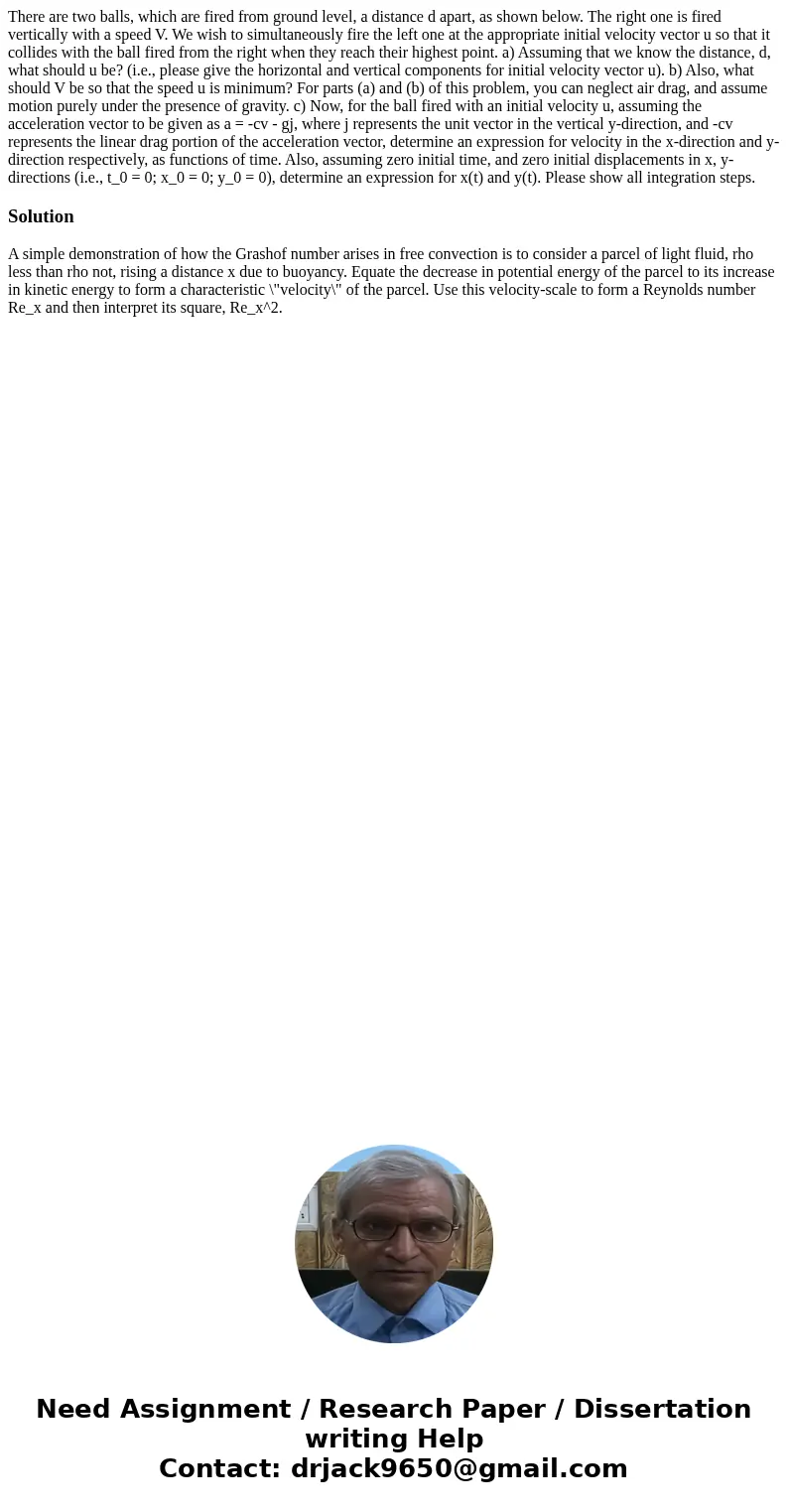There are two balls which are fired from ground level a dist
There are two balls, which are fired from ground level, a distance d apart, as shown below. The right one is fired vertically with a speed V. We wish to simultaneously fire the left one at the appropriate initial velocity vector u so that it collides with the ball fired from the right when they reach their highest point. a) Assuming that we know the distance, d, what should u be? (i.e., please give the horizontal and vertical components for initial velocity vector u). b) Also, what should V be so that the speed u is minimum? For parts (a) and (b) of this problem, you can neglect air drag, and assume motion purely under the presence of gravity. c) Now, for the ball fired with an initial velocity u, assuming the acceleration vector to be given as a = -cv - gj, where j represents the unit vector in the vertical y-direction, and -cv represents the linear drag portion of the acceleration vector, determine an expression for velocity in the x-direction and y-direction respectively, as functions of time. Also, assuming zero initial time, and zero initial displacements in x, y-directions (i.e., t_0 = 0; x_0 = 0; y_0 = 0), determine an expression for x(t) and y(t). Please show all integration steps.
Solution
A simple demonstration of how the Grashof number arises in free convection is to consider a parcel of light fluid, rho less than rho not, rising a distance x due to buoyancy. Equate the decrease in potential energy of the parcel to its increase in kinetic energy to form a characteristic \"velocity\" of the parcel. Use this velocity-scale to form a Reynolds number Re_x and then interpret its square, Re_x^2.

 Homework Sourse
Homework Sourse